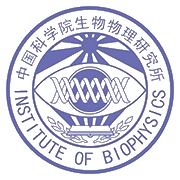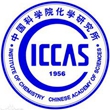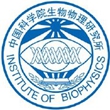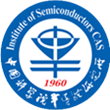Sessions 4:Geo-sciences
Michael Wagner

Character introduction
Positions
2019 Head of the Centre for Microbiology and Environmental Systems Science (full faculty status), University of Vienna
2019 Distinguished professor (20%), Aalborg University, Denmark
2015 Head of the Research Network “Chemistry meets Microbiology” , University of Vienna
2010 Head of the Large Instrument Facility of Advanced Isotope Research, University of Vienna
2003-2018 Head of the Department of Microbiology and Ecosystem Science, University of Vienna
2003 Full professor for Microbial Ecology, University of Vienna
2001-2003 Associate Professor (wissenschaftlicher Oberassistent) at the Technische Universität München
2000 Habilitation (Microbiology) at the Faculty of Chemistry of the Technische Universität München
1996-2000 Assistant Professor at the Technische Universität München
Honors and Awards
2019 Wittgenstein Award of the Austrian Science Fund (FWF) on behalf of the Austrian Ministry for Science (1.5 Mio €). Highest science award in Austria.
2018 Jim Tiedje Award of the International Society for Microbial Ecology (ISME), lifetime achievement award of the society
2018 Highly Cited Researcher (http://highlycited.com)
2017 Elected Member of the European Molecular Biology Organisation (EMBO)
2017 Highly Cited Researcher (http://highlycited.com)
2016 Full member of the Austrian Academy of Sciences
2016 Highly Cited Researcher (http://highlycited.com)
2015 Schrödinger Prize of the Austrian Academy of Sciences
2009 Elected member of the German National Academy of Sciences, Leopoldina
2019 Head of the Centre for Microbiology and Environmental Systems Science (full faculty status), University of Vienna
2019 Distinguished professor (20%), Aalborg University, Denmark
2015 Head of the Research Network “Chemistry meets Microbiology” , University of Vienna
2010 Head of the Large Instrument Facility of Advanced Isotope Research, University of Vienna
2003-2018 Head of the Department of Microbiology and Ecosystem Science, University of Vienna
2003 Full professor for Microbial Ecology, University of Vienna
2001-2003 Associate Professor (wissenschaftlicher Oberassistent) at the Technische Universität München
2000 Habilitation (Microbiology) at the Faculty of Chemistry of the Technische Universität München
1996-2000 Assistant Professor at the Technische Universität München
Honors and Awards
2019 Wittgenstein Award of the Austrian Science Fund (FWF) on behalf of the Austrian Ministry for Science (1.5 Mio €). Highest science award in Austria.
2018 Jim Tiedje Award of the International Society for Microbial Ecology (ISME), lifetime achievement award of the society
2018 Highly Cited Researcher (http://highlycited.com)
2017 Elected Member of the European Molecular Biology Organisation (EMBO)
2017 Highly Cited Researcher (http://highlycited.com)
2016 Full member of the Austrian Academy of Sciences
2016 Highly Cited Researcher (http://highlycited.com)
2015 Schrödinger Prize of the Austrian Academy of Sciences
2009 Elected member of the German National Academy of Sciences, Leopoldina
Topic: Microbial Ecology of the Nitrogen Cycle and its Implications for Environmental Health
Abstract During the last century, humans have strongly impacted the global N-cycle by burning fossil fuels, cultivating N2-fixing plants, and most importantly by using artificial nitrogen fertilizers and these anthropogenic transformations of the nitrogen cycle continue at a record pace. Today, the amount of industrially produced NH4+ by the Haber-Bosch process that is supplied per year to the environment is comparable to the total annual natural N2 fixation in the world’s oceans. More than two billion people could not be fed without this measure, but as fertilization efficiency is often below 50%, enormous amounts of anthropogenic ammonium affect the N-cycle, representing probably the largest impact on the N-cycle in its history with vast ecological and economical consequences.
In this talk, I will first provide an overview on how discoveries by microbial ecologist have radically changed our perception of the biogeochemical nitrogen cycle during the last 20 years. Subsequently, I will focus on nitrification. Nitrification, the microbially mediated oxidation of ammonia via nitrite to nitrate, contributes largely to the dramatic inefficiency of ammonium fertilization in agriculture causing massive eutrophication events, biodiversity loss, and dead zones in water bodies and human health risks associated with nitrate exposure through drinking water. Furthermore, nitrifiers produce significant amounts of the gases NO and N2O, which deserves attention as NO contributes to the production of ground-level ozone and acid rain and N2O is an important greenhouse gas, predicted to be the dominant ozone-depleting substance in the stratosphere in the 21st century. On the other hand, nitrifiers close the N- cycle and protect the environment as they play a pivotal role for nitrogen removal in wastewater treatment. Nitrifying microbes were discovered more than a century ago, and until recently it was textbook knowledge that this process is driven by a few groups of metabolically highly specialized bacteria and archaea that aerobically either oxidize ammonia to nitrite (ammonia-oxidizing bacteria and archaea) or nitrite to nitrate (nitrite-oxidizing bacteria). By combining advanced cultivation techniques, physiology, meta-comics-approaches and single-cell isotope probing, my team showed that nitrifiers can be physiologically much more versatile than previously thought by being capable of using cyanate, hydrogen or formate for energy conservation. Furthermore, we demonstrated that nitrification counter-intuitively, not always starts with the activity of ammonia oxidizers, but can also be initiated by NOB in a reciprocal feeding interaction. Excitingly, we recently discovered complete ammonium oxidizers (comammox) that alone convert ammonia to nitrate, are widespread in the environment, and produce much less N2O than ammonia-oxidizing bacteria. Strategies to exploit these exciting new insights into the biology of nitrifiers to ameliorate anthropogenic damage to the environment will be discussed.
In this talk, I will first provide an overview on how discoveries by microbial ecologist have radically changed our perception of the biogeochemical nitrogen cycle during the last 20 years. Subsequently, I will focus on nitrification. Nitrification, the microbially mediated oxidation of ammonia via nitrite to nitrate, contributes largely to the dramatic inefficiency of ammonium fertilization in agriculture causing massive eutrophication events, biodiversity loss, and dead zones in water bodies and human health risks associated with nitrate exposure through drinking water. Furthermore, nitrifiers produce significant amounts of the gases NO and N2O, which deserves attention as NO contributes to the production of ground-level ozone and acid rain and N2O is an important greenhouse gas, predicted to be the dominant ozone-depleting substance in the stratosphere in the 21st century. On the other hand, nitrifiers close the N- cycle and protect the environment as they play a pivotal role for nitrogen removal in wastewater treatment. Nitrifying microbes were discovered more than a century ago, and until recently it was textbook knowledge that this process is driven by a few groups of metabolically highly specialized bacteria and archaea that aerobically either oxidize ammonia to nitrite (ammonia-oxidizing bacteria and archaea) or nitrite to nitrate (nitrite-oxidizing bacteria). By combining advanced cultivation techniques, physiology, meta-comics-approaches and single-cell isotope probing, my team showed that nitrifiers can be physiologically much more versatile than previously thought by being capable of using cyanate, hydrogen or formate for energy conservation. Furthermore, we demonstrated that nitrification counter-intuitively, not always starts with the activity of ammonia oxidizers, but can also be initiated by NOB in a reciprocal feeding interaction. Excitingly, we recently discovered complete ammonium oxidizers (comammox) that alone convert ammonia to nitrate, are widespread in the environment, and produce much less N2O than ammonia-oxidizing bacteria. Strategies to exploit these exciting new insights into the biology of nitrifiers to ameliorate anthropogenic damage to the environment will be discussed.
Previous Guoxiong Wu
Next Xiankang Dou








